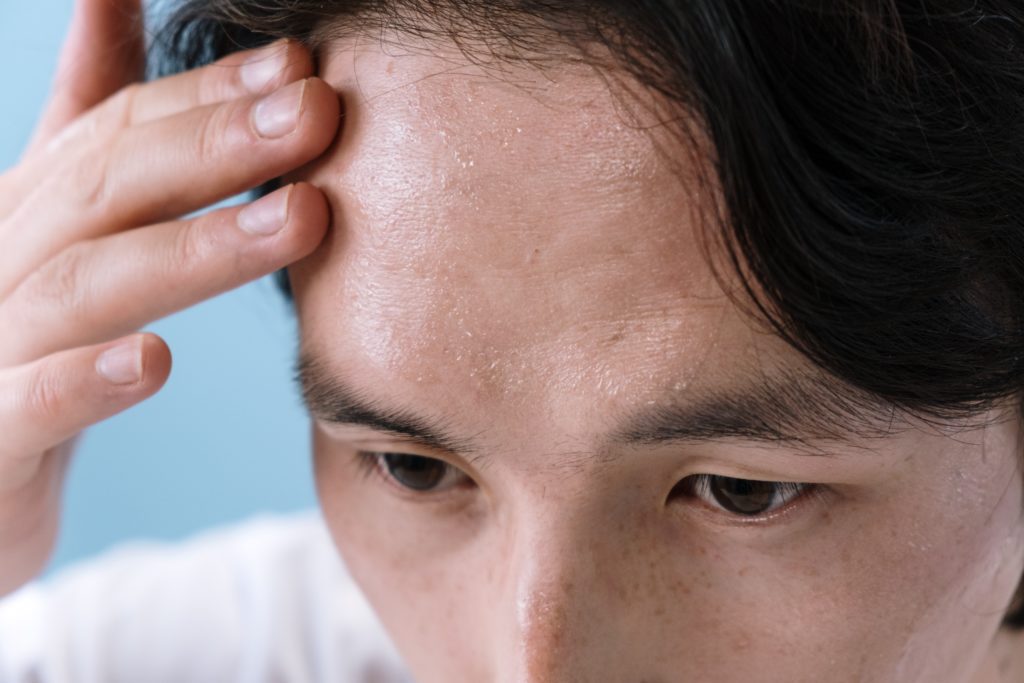Besides sometimes giving off an unpleasant odour, there are many things that sweat can tell us about the human body.
The main function of sweat is to control your body temperature. When your body temperature rises, whatever the reason may be, we sweat, our body’s natural mechanism, cooling our temperature as the moisture evaporates from our skin.
Sweat is a normal and healthy bodily function and is produced by glands in the deeper layer of the skin, the dermis. Sweat glands can be found all over the body and we can have anywhere between 2-4 million of them, but the most common locations are of course, the armpits, forehead, palms of the hands and soles of the feet.
There are many normal situations where sweating occurs, such as during warmer climates, during physical exercise, when we’re experiencing high levels of stress, eating spicy foods or from a fever associated with illness. However, there are also cases of excessive sweating known as hyperhidrosis where sweating occurs in situations where the body doesn’t need to cool down. There are often medical factors that contribute to this including being overweight, hormonal changes such as the menopause, overactive thyroid, diabetes and certain medications.
Sweat and the skin can tell us a lot about certain medical conditions thanks to the emission of volatile organic compounds (VOCs). VOCs will mainly be derived from sweat and the quality and quantity of them will change to indicate specific characteristics related to specific diseases.
The Journal of Biochemistry highlights: “Any alteration in homeostatic balance due, for instance, to some inherited metabolic disorder or bacterial infection of the diseased area can induce changes in both the quality and quantity of VOCs. For example, some infectious diseases or cancerous wounds develop characteristic, offensive odours.” You can read more about the analysis of VOCs and the detection equipment for medical use on Imspex Medical.
One of the ways to tackle sweat or at least make it smell a little better when we do sweat is to wear a good deodorant or anti-perspirant product which are designed to release a nicer smelling odour when our sweat glands are activated or indeed to help reduce sweat production. Imspex is able to work directly with companies who produce anti-perspirant or deodorants and test them on the human body to check their effectiveness.
Think of Imspex as your analytical lab, providing you with leading GC-IMS technology to analyse the headspace of liquid and the released VOCs associated with it. In short, our technology can be used to analyse contents of an anti-perspirant product and how it performs on the human armpit! Our quality testing laboratory equipment can test the adsorbent qualities of the product analysing how efficient the ingredients are at reducing perspiration and controlling body odour based on where it is applied.
There have been many studies on volatile organic compounds associated with human body odour and this is a particularly insightful study on activated carbon to adsorb VOCs in human body odour, highlighting the adverse effect it can have on quality of life for those who suffer with hyperhidrosis: “Activated carbons (ACs) are often used as excellent and versatile adsorbents. The porous surface of ACs can inactivate various chemical substances by adherence of an extremely thin layer of the compounds to the large surface area of the carbon.”
Much like testing VOCs in product development for food and beverage which you can read about on our blog, the same can be applied to a number of other quality testing laboratory situations.
Find out more about our unique technology here.

